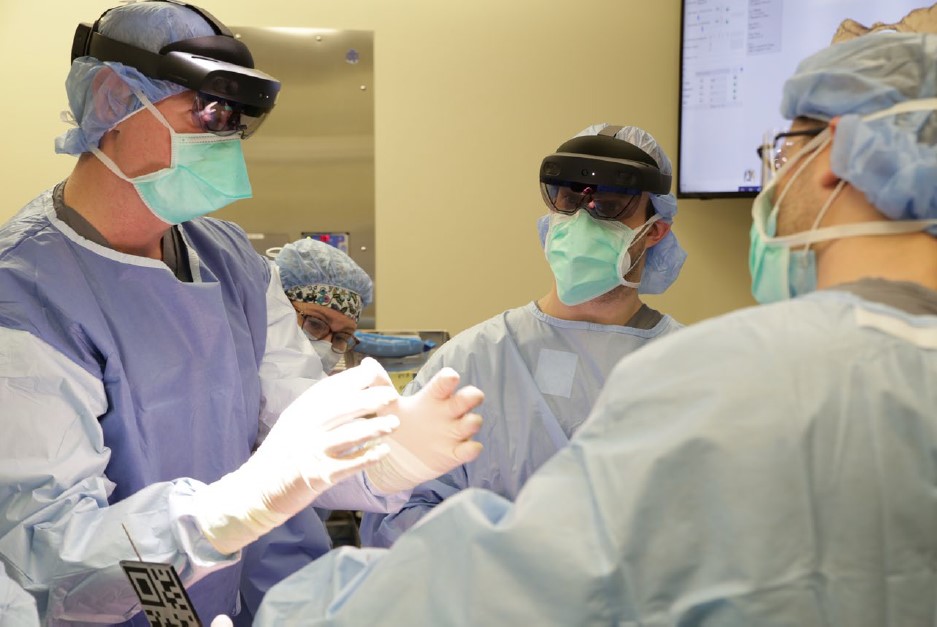Posted by: HipInsight in Featured on March 9, 2021

Boston, Mass. – A team of orthopedic surgeons at New England Baptist Hospital (NEBH) performed the first-ever augmented reality (AR)-guided total hip replacement at a hospital on March 9th. Dr. Stephen B. Murphy, inventor of the HipInsight™ System, performed the hip replacement with NEBH colleagues, Daniel M. Ward, MD, Carl T. Talmo, MD, and Michael Millis, MD. The system, which received FDA clearance in January, is the first intraoperative AR guidance platform for joint replacement to display 3D models of the patient’s anatomy, implants, and instruments inside the body in real time.
“Surgeons traditionally plan hip replacements with two-dimensional Xrays; and then in surgery rely on data shown on screens outside of the surgical field,” said Dr. Murphy. “Augmented reality guidance allows surgeons to stay focused on the patient, projecting holograms on AR glasses that effectively give them ‘X-ray vision’ into the patient’s body. This allows surgeons to see what they need to see, when they need to see it, in the exact sequence of the surgery itself.”
The AR-guided system is the first FDA-cleared surgical platform for joints to be contained entirely within a head-mounted device, the Microsoft HoloLens™ 2. Unlike robotic and traditional navigation systems, there are no large external workstations, cameras, or screens. The small footprint of the AR system means it can be easily deployed across operating rooms, which promotes greater surgical team efficiency and cost savings to hospitals.
“This is the first joint replacement technology using augmented reality to project patient-specific content inside the patient’s body,” said David Mattingly, MD, Clinical Chair of Orthopedics and Surgeon in Chief at NEBH. “Misplaced acetabular components are one of the leading causes of dislocations and revision surgery, however the AR software enables surgeons to place the acetabular component in the proper orientation according to each individual’s anatomy. This is a major step forward in terms of how surgery can be performed, and we look forward to offering this to our patients far and wide.”
Minimally-invasive surgical approaches, like those used at NEBH, have dramatically improved patient outcomes and reduced the length of hospital stays. However, the smaller incisions associated with these approaches have made it more difficult for the entire surgical team to see inside the exposure. By projecting patient-specific holograms on the patient’s body, surgeons no longer have to depend on images on external screens, visualize the patient’s anatomy in their mind’s eye, or navigate via touch.
“As a national leader in orthopedics and musculoskeletal care, we are thrilled to bring this cutting-edge AR technology into our hospital, adding to our existing arsenal of world-class equipment that enables us to deliver the best care to our patients,” said David Passafaro, President of NEBH. “Augmented reality is a powerful tool capable of transforming the future of surgery while also serving as an effective teaching tool. We will continue to invest in training our orthopedic surgeons to use the most innovative techniques and technology available for our patients.”





